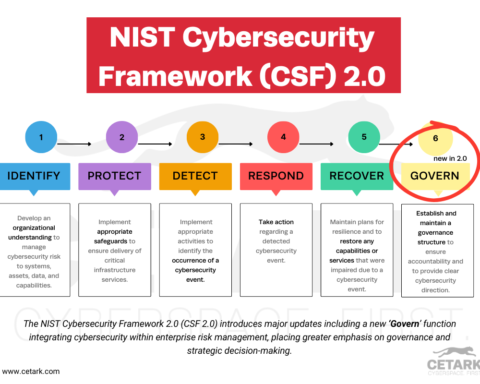Enhancing the security of industrial control systems (ICS) is critical, and executing network segmentation and isolation stands as a fundamental strategy. This guide cuts through the complexity to directly address strategic defense enhancing ics security with network segmentation and isolation. Discover practical techniques to segment and isolate your ICS network, thus armoring your infrastructure against cyber threats while keeping your operations on track.
Key Takeaways
Network segmentation and isolation in industrial control systems (ICS) are critical defenses against cyber threats, providing greater control over traffic, limiting attack spread, and enhancing overall security with measures such as identifying critical assets, implementing RBAC, and employing firewalls and DMZs.
Virtual Local Area Networks (VLANs) contribute significantly to ICS security by segregating network traffic, optimizing network performance, and offering a flexible solution for compartmentalizing network segments, with a focus on managing network traffic patterns and implementing VLANs for strategic industrial operations.
Continuous monitoring, visibility, and incident response are essential in segmented networks to detect anomalies, ensure protocol compliance, and maintain operations, whereas best practices for network segmentation in ICS include comprehensive risk assessments, considerations for scalability, and aligning with compliance requirements.
The Necessity of Network Segmentation in ICS Security

The role of network segmentation in industrial control systems (ICS) security cannot be overstated. It’s a critical component in protecting against an evolving landscape of cyber threats, acting as the first line of defense against perils like malware in programmable logic controllers (PLCs) and unauthorized access to supervisory control and data acquisition (SCADA) systems. It’s like creating a fortress with multiple layers of walls, where each layer contributes to the overall fortification.
The beauty of enabling network segmentation, or segmenting networks, lies in its ability to:
- Break up a large network into smaller, discrete segments or subnets
- Provide greater control over traffic flow
- Limit the potential impact of cyberattacks
- Enhance overall security and resilience
It’s akin to managing a bustling city with various districts; each district functions independently yet collectively contributes to the city’s overall functioning. This twofold approach enhances overall security and resilience.
Network segmentation reduces the attack surface and curbs the lateral movement of malicious actors, making it a formidable defense mechanism against cyber threats. Imagine a town infiltrated by a notorious gang. If the town is segmented into various sections with controlled access, the gang’s movement is severely restricted, thereby limiting the potential damage they can cause.
Identifying Critical Assets for Segmentation
Before erecting the walls of segmentation, it’s crucial to identify the critical assets within your industrial networks. This step is akin to recognizing the essential facilities in a city that require additional protection. A comprehensive assessment of your current network structure is the starting point for this.
Once critical assets are identified, defining zones based on network traffic patterns and security needs becomes a crucial step in implementing OT network segmentation. So, it’s all about pinpointing what needs protection and then building a robust shield around it.
Designing Segmented Networks for Enhanced Security
Designing ICS network segmentation can be complex, requiring in-depth network knowledge, considering the impact of downtime, and selecting appropriate ICS-specific equipment. It’s like laying out the blueprint of a city, where every minute detail matters. The Purdue Model offers an effective structured approach for segmenting ICS networks based on functionality and security needs. This model is like a city planner’s guide, helping to structure the city in a way that optimizes functionality and security.
The integration of IT and OT increases the need for OT network segmentation to restrict malicious actors’ lateral movement if they breach perimeter defenses. So, it’s about designing your city in a way that not only ensures smooth operation but also keeps the intruders at bay.
Implementing Access Control Lists for Isolated Segments
Access control is the gatekeeper of your segmented network, defining who or what is permitted to communicate within a segment. It’s like having a strict gatekeeper at each district’s entry point, ensuring only those with the right credentials can enter.
Role-Based Access Control (RBAC) assigns specific privileges based on roles and responsibilities, controlling network traffic within isolated segments. It’s like having different entry passes for residents, service providers, and visitors in a city, ensuring everyone accesses only the areas they are supposed to.
Isolating Critical Infrastructure to Mitigate Cyber Threats

As technological advancements surge, protecting critical infrastructure in ICS has become imperative. Just as a city’s critical infrastructure like water supply, power grid, and communication systems need protection, so does your ICS. Isolating critical systems and implementing network segmentation is a best practice for enhancing security and establishing a defense-in-depth strategy. This strategy is similar to creating dedicated and secure zones for your city’s critical infrastructure, each with its unique protective measures.
Micro-segmentation in OT involves creating zones as virtual boundaries that group devices or systems with similar functions or security requirements. It’s like grouping together similar businesses or residential areas in a city. Segments in micro-segmentation are the compartments that erect physical or virtual barriers for isolating devices.
Implementing network segmentation strategically protects infrastructure by controlling access to it and reducing the risk of operational disruptions. Examples of applying network segmentation in ICS include:
- Separating OT systems from IT networks
- Creating dedicated zones for PLCs, HMIs, and SCADA systems
- Isolating sensitive or critical segments of the network
Lastly, OT micro-segmentation harmonizes security and operational continuity by minimizing risks associated with isolated critical assets and maintaining industrial activities. In essence, it’s about ensuring that your city continues to function smoothly, even when one district faces a threat.
Creating Zones to Control Access
Just as cities are structured into different zones to manage access, industrial control systems (ICS) networks are structured into zones too, particularly in industrial environments. These zones enable controlled system access and facilitate real-time data exchange and management between field devices, control systems, and SCADA systems. Security zones in ICS networks enhance the granularity of network security and prevent unauthorized lateral movement, much like creating specific zones in a city, each with its unique access control.
Some key benefits of using security zones in ICS networks include:
- Improved network segmentation and isolation
- Enhanced control over network traffic and data flow
- Better protection against cyber threats and attacks
- Simplified network management and troubleshooting
- Compliance with industry regulations and standards
By implementing security zones in your ICS network, you can strengthen the overall security posture and resilience of your industrial infrastructure.
This configuration acts as a regulatory doorway, managing the flow of traffic between different network segments.
The Role of Firewalls and DMZs in Network Isolation
The role of firewalls and Demilitarized Zones (DMZs) in network isolation is akin to the role of city walls and buffer zones in protecting a city. Firewalls guard the perimeters, while DMZs facilitate the secure transfer of information between security zones, acting as a buffer for added security.
Stateful firewalls, preferred in ICS and SCADA systems, can understand the context of network communications and block irregular packets, much like a vigilant city guard who knows who to let in and who to keep out.
Addressing Insider Threats with Network Isolation
Insider threats are a significant concern in ICS, just like how a city can face threats from its residents. Implementing a zero trust model in ICS environments can help mitigate insider threats by enforcing strict access and communications controls, ensuring that all users and devices are securely authenticated before gaining network access.
Also, continuous monitoring and passive scanning in segmented networks are essential for efficient detection of abnormal behaviors, aiding in the mitigation of sophisticated cyber threats and insider threats without causing disruptions.
Enhancing ICS Security with Virtual Local Area Networks (VLANs)

Virtual Local Area Networks (VLANs) play a crucial role in enhancing ICS security. They segregate network traffic into isolated segments to mitigate cybersecurity risks within industrial control systems, functioning like separate neighborhoods within a city. VLANs allow for the division of a network into multiple, independent subnetworks, each functioning independently, much like different districts in a city.
The isolation and protection of individual network segments by VLANs are invaluable in securing sensitive control systems in industrial settings. VLANs enable organizations to implement granular access control policies, ensuring that only authorized personnel and devices can access specific segments. This reduces the risk of unauthorized or malicious activity, similar to how access control measures in a city ensure only authorized people can access certain areas.
Micro-segmentation provided by VLANs adapts to the specific security needs of individual devices or systems within the ICS landscape. There are two types of network segmentation: physical and logical, with VLANs being one of the logical methods that offer more flexibility. So, while physical segmentation is like building physical walls around different city zones, VLANs offer a more dynamic and flexible approach, like virtual barriers that can be adjusted as per the city’s evolving needs.
VLANs as a Tool for Managing Network Traffic Patterns
VLANs serve as an efficient tool for managing network traffic patterns. They optimize network performance by decreasing congestion, crucial in environments requiring real-time data processing. This is akin to creating separate lanes in a city for different types of vehicles to manage traffic and prevent congestion.
Software is utilized in logical segmentation to establish network boundaries, and these boundaries can be easily modified without the requirement for physical rewiring. It’s like having the flexibility to adjust the city’s layout without the need for physical reconstruction.
Implementing VLANs for Strategic Industrial Operations
When it comes to implementing VLANs for strategic industrial operations, it’s all about ensuring that the right access control lists are set up to manage network traffic. Utilizing VLAN tagging helps identify and segregate traffic for different VLANs, and implementing protocols that handle the routing of traffic between VLANs are all crucial steps in this process.
It’s like planning the city’s transportation system, ensuring smooth traffic flow, and efficient routing.
Operational Technology (OT) and Network Segmentation Synergy

There’s a unique synergy between Operational Technology (OT) and network segmentation. Managing multiple VLANs in OT settings can be complex and error-prone, necessitating a balance between secure configurations and network manageability. Tools like Tufin aid organizations in implementing effective OT network segmentation by offering network traffic visibility and a structured approach to security policy definition.
The integration of OT systems in network segmentation offers several benefits:
- Enhances the cybersecurity posture by reducing hazards
- Receives recognition from authoritative entities as a cybersecurity best practice
- Improves overall security, similar to integrating advanced security systems in a city, ensuring not only the city’s security but also its recognition as a safe city.
Segmenting OT Systems for Robust Security
When it comes to segmenting OT systems for robust security, it’s all about expanding on basic IT/OT separations. Subdividing ICS environments into finer isolated domains for increased cybersecurity protection is akin to segmenting a city into various zones, each with its unique security measures.
Implementing OT micro-segmentation and security zoning based on standards such as the Purdue Model can ensure compliance and mitigate insider threat risks within specific network areas.
Remote Access Management in Segmented OT Environments
In segmented OT networks, conduits are pivotal in controlling the flow of communication between zones. They serve an essential function in managing remote access and enforcing security protocols. The management of remote access in OT environments is complicated due to several factors, including the need to accommodate third-party vendor requirements, incorporate legacy systems, and handle infrequent patching practices.
It’s like managing the entry and exit points in a city, ensuring smooth traffic while maintaining high security.
Achieving Continuous Monitoring and Visibility in Segmented Networks

For a city to run smoothly, it’s essential to have a constant watch on its operations. Similarly, achieving continuous monitoring and visibility is crucial in segmented networks. Regular updates and continuous monitoring can fortify the security of VLANs and ensure alignment with changing network and operational needs. Continuous network monitoring in segmented networks can detect anomalies, ensure protocol compliance, and minimize the attack surface through restricted traffic rules.
Continuous monitoring provides visibility into network traffic and device behavior for each segment of the network. Monitoring tools grant real-time insights, send threat alerts, and identify suspicious activities or deviations from established baselines. Improved visibility and monitoring capabilities in segmented networks streamline the auditing process and assist in ensuring compliance with relevant standards.
Tools for Monitoring Segmented Network Traffic
Just as a city surveillance system uses various tools for monitoring, segmented networks also require a range of tools for effective monitoring. These include external and internal vulnerability scans, host-based agent scans, and active scanning tools.
Managed detection and response solutions provide 24×7 monitoring capabilities and integrate network information into a centralized dashboard for better visibility and control.
Responding to Security Incidents in Segmented Environments
A city’s response to an emergency situation is crucial to mitigate its impact. Similarly, responding to security incidents in segmented environments is critical. Network segmentation isolates potential security incidents within separate segments, thereby preventing them from impacting the entire operational network. This approach enhances the overall security of the network. Automated incident response mechanisms like access restrictions or quarantining dubious devices can curb the spread of an attack in segmented networks.
Essential operations can continue functioning during a security breach, thanks to network segmentation of the entire network, thus minimizing downtime and maintaining productivity.
Best Practices for Segmentation and Isolation in ICS Environments
Just as a city follows best practices for its smooth operation, there are best practices for segmentation and isolation in ICS environments. Organizations should prioritize their micro-segmentation efforts based on the criticality of assets and the potential impact on operations.
Taking on pilot projects in limited areas to test micro-segmentation strategies allows for addressing challenges and refining strategies before full implementation across the ICS network. A solid understanding of OT architecture is crucial to fortifying security perimeters effectively and implementing strategic network segmentation.
Conducting Risk Assessments for Segmented Networks
Conducting a comprehensive inventory of all OT assets, including devices, systems, and their interdependencies, is a foundational step for successful network segmentation. Assessing current network architecture and understanding data flows are critical for designing network segments that address both operational and security needs.
Scalability Considerations for Future-Proofing ICS Networks
Scalability is integral to network design, ensuring industrial processes can evolve without security compromises. Network segmentation presents a scalable approach to safely integrate new devices and technologies in industrial settings.
Scalability in micro-segmentation frameworks is essential to support future growth and the addition of new systems or devices.
The Intersection of Compliance and Segmentation in ICS Security
Just as a city’s governance must comply with specific rules and regulations, implementing network segmentation in an ICS environment must align with certain compliance requirements. Network segmentation offers a structured framework for implementing security controls. It also helps organizations meet industry-specific standards by enhancing auditability. Network segmentation helps organizations adhere to industry standards such as IEC 62443, which provides guidelines for securing industrial automation and control systems.
Auditing and compliance mechanisms in industrial cybersecurity ensure that security practices align with industry-specific standards and regulations, fostering a culture of continuous compliance. Solutions such as those offered by Tufin deliver continuous compliance that meets the stringent demands of regulatory bodies, maintaining alignment with standards like IEC 62443 throughout the network’s lifecycle.
Aligning Segmentation Strategies with Compliance Requirements
Aligning network segmentation strategies with regulatory requirements is a critical aspect of ICS security. It involves taking into account factors like the physical operating environment, service availability, and specific security mandates for compliance.
Auditing Segmented Networks for Compliance Assurance
Auditing for network segmentation compliance in ICS includes defining the audit scope, which is critical for understanding the boundaries and focus of the compliance effort. A key aspect of the auditing process involves reviewing existing policies and the network architecture to assess the current state and alignment with security practices.
The audit must ensure that there is adherence to relevant industry standards such as ISA/IEC 62443 or NERC CIP to demonstrate compliance.
Summary
We have traversed the intricacies of network segmentation and how it fortifies ICS security. From the necessity of segmenting networks to the importance of isolating critical infrastructure, from the role of VLANs to the synergy of OT and network segmentation, we have explored the various facets of this complex yet essential topic. With the increasing menace of cyber threats, the implementation of network segmentation emerges as a compelling strategy to safeguard industrial control systems. As we march towards a future where the digital and physical worlds are increasingly intertwined, let’s fortify our defenses and ensure a secure and resilient industrial ecosystem.
Frequently Asked Questions
What is the role of network segmentation in industrial control systems (ICS) security?
Network segmentation in industrial control systems (ICS) security plays a crucial role in enhancing control over traffic flow, limiting the potential impact of cyberattacks, and protecting against evolving cyber threats.
How do VLANs enhance ICS security?
VLANs enhance ICS security by segregating network traffic into isolated segments, which helps mitigate cybersecurity risks and ensures that only authorized personnel and devices can access specific segments. This reduces the risk of unauthorized or malicious activity.
How does network segmentation align with compliance requirements in ICS security?
Network segmentation helps organizations meet industry-specific standards and regulations, fostering a culture of continuous compliance in ICS security.







